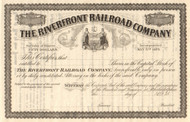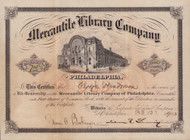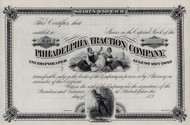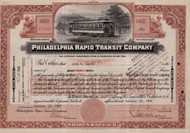Categories
Categories
- Home
- Banking and Money
- Insurance
- Independence Indemnity Company stock certificate 1932 (Philadelphia PA)
Independence Indemnity Company stock certificate 1932 (Philadelphia PA)
Independence Indemnity Company stock certificate 1932 (Philadelphia PA)
Product Description
Independence Indemnity Company stock certificate 1932 (Philadelphia PA)
Depression era insurance company. Amazing vignette of Independence Hall and other historic Philadelphia buildings. Issued and not cancelled. Dated 1932. Measures approximately 11.75 x 8.75 inches.
The Independence Indemnity Company was formed in Pennsylvania in 1931 by merging several other insurance companies, some of which were in financial distress. The Independence Indemnity Company was a short-lived insurance company and was unable to continue on its own due to financial instability, eventually leading to a reinsurance treaty with another company to take over its assets and liabilities. The company's financial struggles led to legal cases, including one in 1939 involving a fraudulent conveyance claim and others in the early 1930s concerning workmen's compensation claims where the company was the insurer.
Independence Hall, which was initially called Pennsylvania State House, was completed in 1753. It was the first capitol of the colonial era Province of Pennsylvania and, even then, was seen as "the greatest ornament in the town". The building became a symbol of liberty, democracy, and the founding of the United States. During the American Revolutionary War, the Second Continental Congress convened in Independence Hall from 1775 to 1781. They founded the Continental Army inside Independence Hall on June 14, 1775, and the Declaration of Independence was adopted there on July 4, 1776. From May 25 to September 17, 1787, Independence Hall hosted the Constitutional Convention, where the U.S. Constitution was debated, drafted, and ratified. In 1915, former U.S. president William Howard Taft presided over a convention at Independence Hall, where the League to Enforce Peace was formed.
Both the Declaration of Independence, 1776, and the Constitution of the United States, 1787, were discussed, adopted, and signed at this building which as a result became a symbol of freedom and democracy and a very important step in the American history that later had significant impacts on lawmakers, political thinkers and governmental charters around the world. This fact gave the building a direct association with events and ideas of outstanding universal significance fulfilling the criterion and designating it into a UNESCO World Heritage Site in 1979.
Product descriptions and images
Please note that some pictures may only be representative of the inventory available. If we have more than one piece, we are unable to scan and display every piece. Unless otherwise noted, that there are variations for signatures, cancellation marks/holes, serial number, and dates. Colors will be as noted and pictured.
 Loading... Please wait...
Loading... Please wait... 







